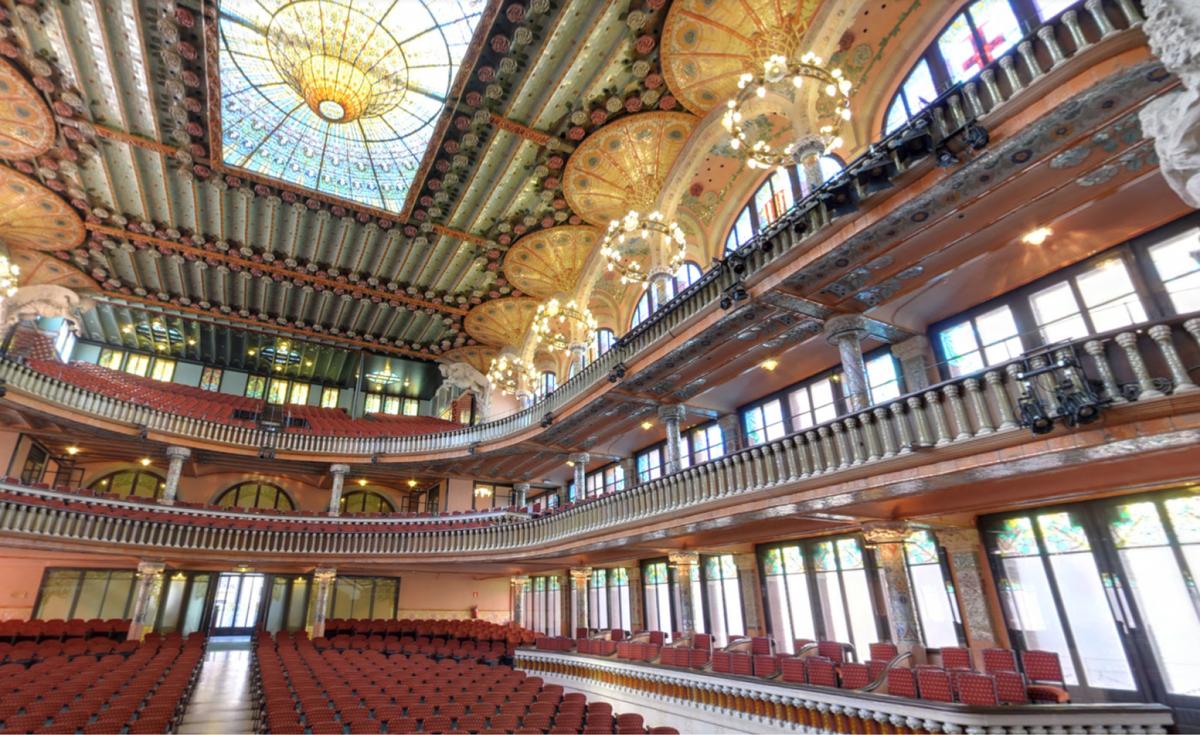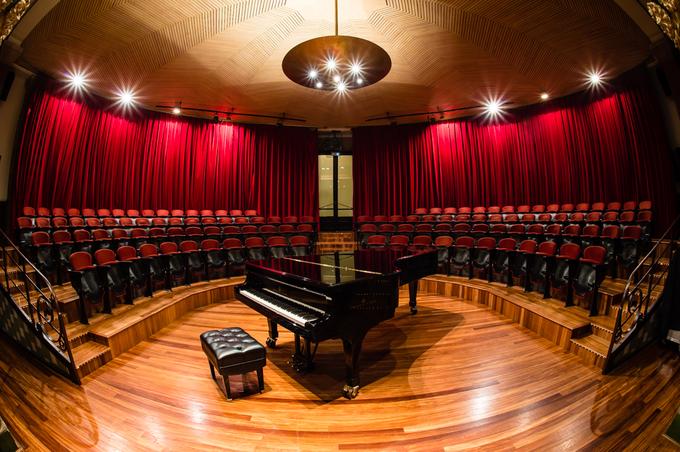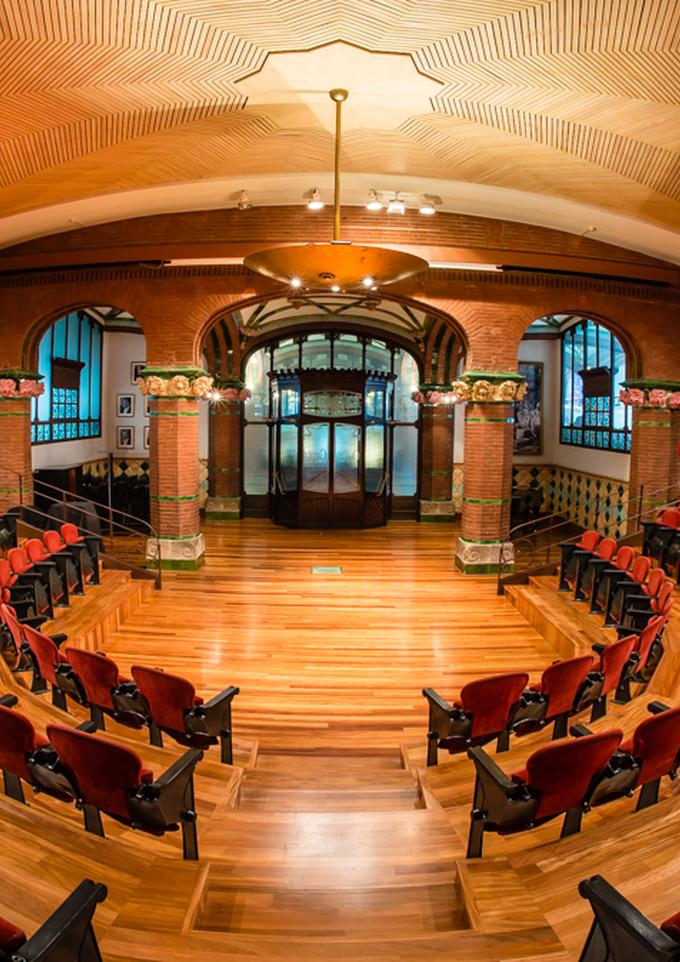World Heritage Site by UNESCO
The Palau de la Música Catalana was built between 1905 and 1908 by the modernist architect Lluís Domènech i Montaner as a home for the Orfeó Català, financed by popular subscription. The building is located in Sant Pere district, one of the most beautiful areas of Barcelona.
The Palau de la Música Catalana is an architectural jewel of Catalan Art Nouveau, the only concert venue in this style to be listed as a World Heritage Site by UNESCO (4th December 1997), which today represents an essential landmark in the musical and cultural life of Catalonia. Moreover it represents a symbolic emotional heritage for a whole people who identify with its history.
Concert Auditorium
The Concert Auditorium – one of the most distinctive in the world – has been for more than hundred years the privileged setting for the musical life, both national and international, of the city of Barcelona. It has hosted world premieres and it is a landmark for both symphonic and choral music. Dominated by the organ over the stage and with a central skylight portraying the sun, the auditorium is filled with natural light.
A mystical, paradoxical hall, packed with figures like the muses which surround the stage, a bust of Anselm Clavé on one side and Beethoven on the other, and natural motifs, including flowers, palms or fruits.
Rehearsal Hall of the Orfeó Català
Another little gem of the Palau de la Música is the Sala d'Assaig de l'Orfeó Català, the Orfeó Català rehearsal room. A cosy, intimate hall for small-format concerts, talks, presentations - and, of course, where the Orfeó Català choirs practise. The first stone of the Palau, laid in 1905, is here. With its semi-circular arc of seats facing the half moon arch on the ceiling over the Concert hall stage, it features robust columns, stained glass and a typical decoration of Catalan Modernism.
The facade
The facade of the Palau, located on Sant Pere més alt street, the only access until 1989, is on the corner of Amadeu Vives street, which is resolved with the inclusion of the sculptural group La cançó popular catalana, by the artist Miquel Blay and reproduced to larger than natural size by Frederic Bechini, where a Sant Jordi is represented, under a female figure in the center as a large figurehead, which is an allegory of music, surrounded by a group of characters representing the sailor, the peasants, the old man and the children. It is considered the top work of the sculptor Blay, with a social sensitivity and a set of great harmony. According to an inscription at the foot of the sculpture, it was paid by the Marquis of Castellbell (Joaquim de Cárcer and Amat) and was inaugurated on September 8, 1909. The complexity of the angular facade to two narrow streets makes it difficult to englobe the vision of the whole facade. Other elements of this facade are the arches with large columns of red brick and ceramics. Inside two of these columns were the original lockers. On the first floor there is a balcony that runs along the facade with fourteen columns in groups of two, covered with mosaic, all with different drawings; on the second floor the busts of musicians on columns, made by Eusebi Arnau: from left to right are Palestrina, Bach and Beethoven; past the sculptural group on the corner is the bust of Wagner already on Amadeu Vives Street. At the top of this facade a large mosaic pediment of Lluís Bru symbolizes the flag of the Orfeón by Antoni Maria Gallissà and in the center a queen presiding over a party with a spinning wheel, alluding to La Balanguera, poem by Joan Alcover, with music by composer Amadeu Vives, a piece that the Orfeón interpreted the most and that since 1996 is the official anthem of Mallorca.
Lluís Millet Hall
Another very special part of the Palau is the great Sala Lluís Millet, or Lluís Millet Hall, a meeting place in intermissions dedicated to Maestro Millet, the founder of the Orfeó Català. The hall is two storeys high, with great stained glass windows decorated with floral designs, giving an extraordinary effect. Even more exceptional is the balcony which can be seen through these windows, with its double colonnade decorated with distinctive colours and ornamentation.
Foyer
Another exceptional setting is the Foyer of the Palau, which has room for a large number of people, even seated at tables, both when there are performances and when it is used as a separate restaurant-cafeteria. The wide arches built with bricks and green and floral-pattern glazed ceramics give this area a distinctive air or its very own.









